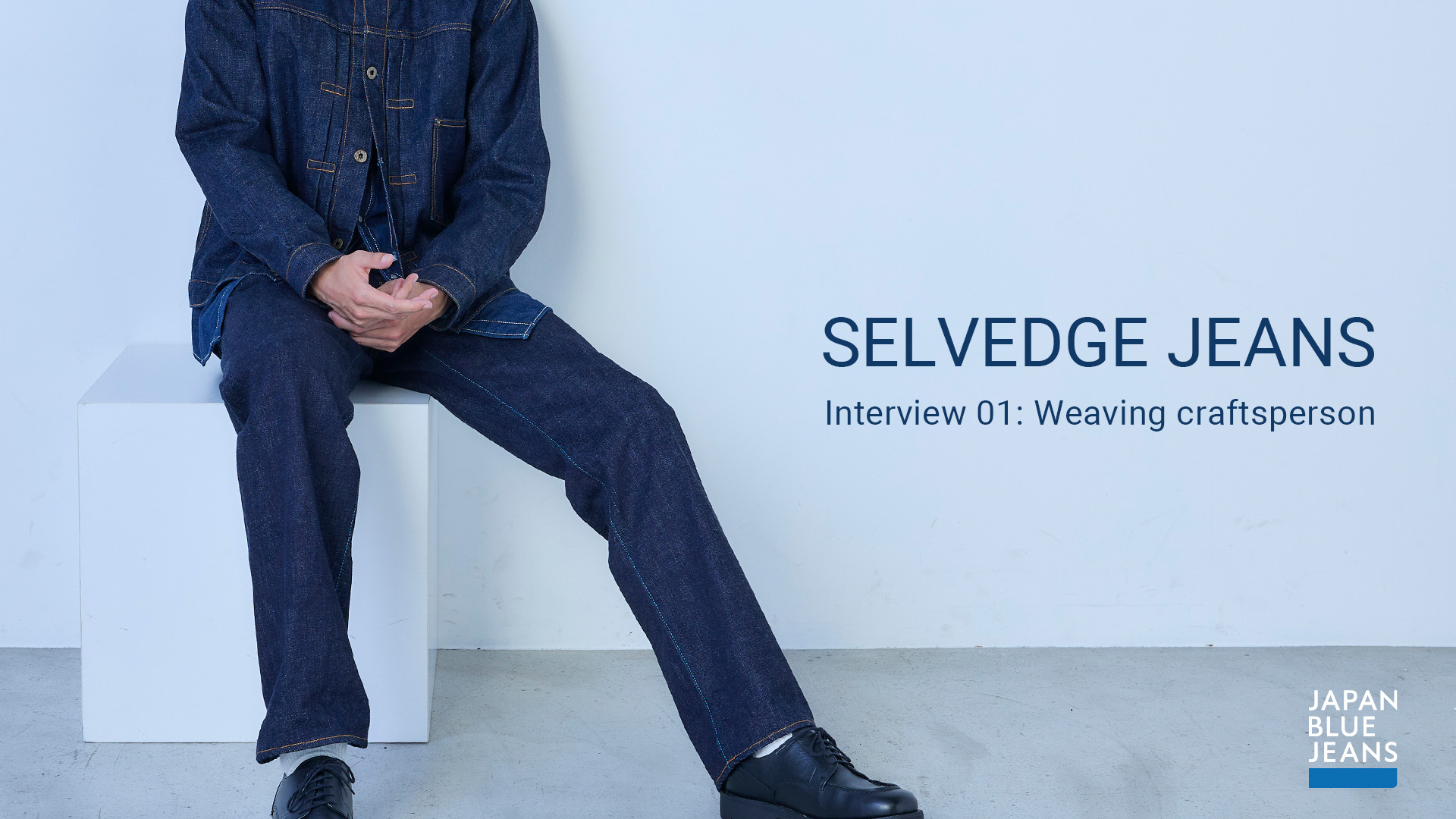
JAPAN BLUE JEANS is committed to ”MADE IN JAPAN" and all processes are done in Japan.
There are various production processes involved in making jeans, and each process has its own people and craftspeople.
We interviewed 3 craftspeople involved in the production of JAPAN BLUE JEANS.

| A factory of Nakaune Woven Fabric, a textile mill for JAPAN BLUE JEANS, is located about half an hour drive away from it headquarter in Kojima. Mr. Shigeru Uchida is a factory manager who has been working in the industry for 50 years. He is over 70 years old and is still working in the mill in which we should probably call him a legend. After graduating a high school, he entered a long-established canvas cloth factory, and he operated and maintained about 60 machines by himself. At the mill, he had spent over 40 years, and that made him recognized as an authentic craftsman in Kojima and was eventually offered a job by Nakaune Woven Fabric about 10 years ago. At the time, he accepted the offer since he was attracted to the work involved in denim fabric, a major industry in Kojima, and the fact that it was work that could only be handled by Mr. Uchida. At Nakaune Woven factory, we use only old-type power looms, called shuttle looms which can manufacture denim fabrics in a special quality that cannot be reproduced in the current market. We asked Mr. Uchida about details of it. |
“We use 10 looms in total in this factory. All of them are called ‘GL9’, made by TOYODA, which is the foundation manufacturer of today’s TOYOTA Motor Corporation, and are now discontinued. Parts are no longer manufactured, so the only way to keep them running is to repair them by ourselves. However, even if there is a manual on how to handle machine, there is no instruction on how to repair. I have come this far by facing the machine and learning on my own. It's probably more like a remodeling than a repairing.

While other denim makers are introducing looms equipped with the latest technology, Mr. Uchida is sticking to an analog method that could be described as an anachronism. What is his intention? “When considering production efficiency and cost, it may be true that there are only disadvantages. However, I feel that weaving on an old-style power loom is the real thing. I feel that weaving on an old-style power loom is authentic. Besides, GL9 can use thick yarns and yarns of various shapes, which are essential for making heavy-ounce denim fabrics. The innovative looms, which are now the mainstream, use wind pressure and water instead of shuttles. The innovative weaving machines that are now mainstream use wind or water to feed weft yarns instead of a shuttle. Therefore, thick or uneven yarns cannot be used. |

Moreover, cannot control the speed and tension of looms that much, so
the individual characteristics of each cotton are not utilized. If so, there
would be no meaning of my existence.” Mr. Uchida is a calm person, but
he is a very sharp and passionate artisan, and he continued “Learning
from the past as the saying goes, even old-fashioned looms have good
points and also we can find something new by looking at the past. In
order to pass on the charm, I am listening to the sound with my ears and
looking at looms with my eyes to see if there is anything wrong and
confront them everyday.
It is an analog machine without a manual, so there is no other way. Some days I feel like I am at a loss, but there is a sense of accomplishment in solving
these problems.”In the end, we asked him about his future perspective. ”There are lack of successors everywhere in the Kojima area. I have a direct
report, but it is not yet since I can entrust him with my job at ease. I'm long past the typical retirement age, but I plan to work hard for a while, with the
intention of being nevertiree.







